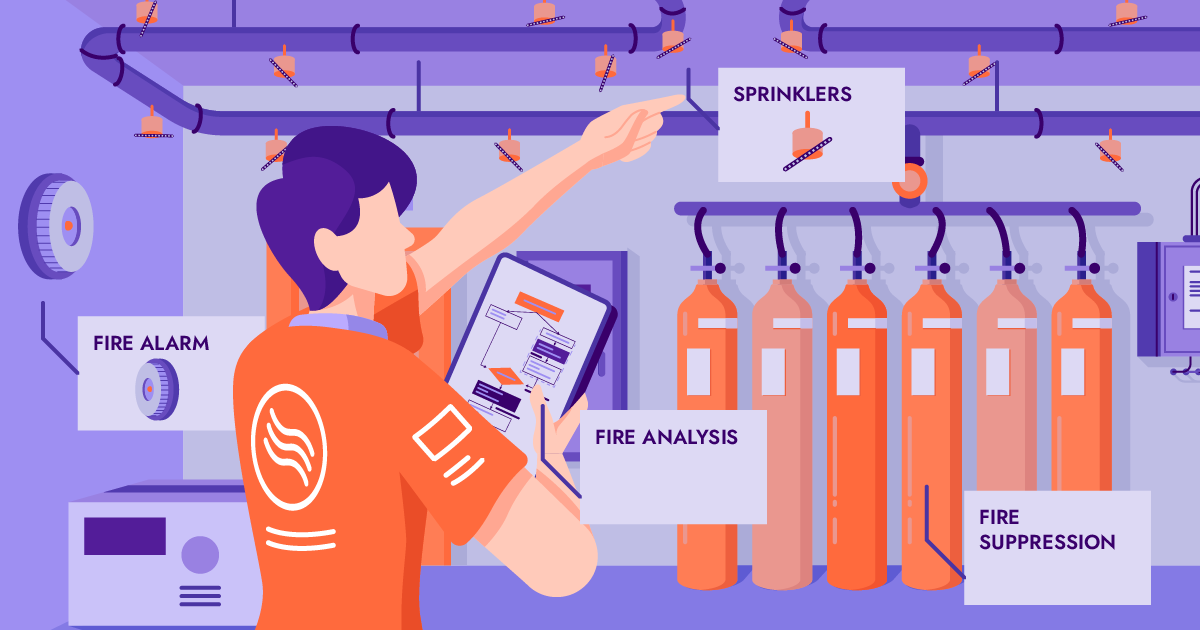Comprehensive Guide to Motor Grader Maintenance

Rev Up Your Maintenance Game: Unleash the Power of Motor Grader Maintenance!
Motor graders play a crucial role in the construction and maintenance of roads, ensuring a smooth and even surface for safe driving.
To keep these powerful machines operating at their best, regular maintenance is essential. In this comprehensive guide, we’ll cover everything you need to know about motor grader maintenance.
From understanding vital parts to daily checks, scheduled maintenance, cleaning and storage, maintenance records, common issues, safety protocols, and even leveraging FieldInsight asset management software for streamlined management. Let’s dive in!
Understanding the Vital Parts of a Motor Grader
The vital parts of a motor grader that require routine maintenance include the engine, hydraulic system, moldboard, and tires. The engine provides power, while the hydraulic system controls various functions like raising and lowering the moldboard.
The moldboard shapes and levels the ground, and the tires provide traction and stability. Routine maintenance involves tasks like checking fluid levels, inspecting for damage or wear, and ensuring proper pressure and lubrication.
By maintaining these components, you ensure optimal performance, control, and safety while operating the motor grader.
Essential Daily Maintenance Checks for Motor Graders
As a part of your job management, regular daily maintenance checks are crucial for keeping your motor grader in optimal condition and avoiding malfunctions. By following a checklist of tasks, you can ensure smooth operation and prevent costly breakdowns. The checklist includes checking the engine, hydraulic system, moldboard, tires, lights and signals, and fluids and lubrication. Performing these daily checks helps catch potential issues early on, leading to improved performance, reduced downtime, and a longer lifespan for your motor grader.
Scheduled Maintenance for Motor Graders
Regular maintenance tasks are essential to ensure precision and make sure your motor grader performs optimally. To maintain precision and operator safety, it’s vital to keep your motor grader in peak condition and ensure efficient operation.
Let’s discuss some key motor grader maintenance tips that should be carried out at regular intervals, along with their recommended timelines and importance:
Changing Oil and Filters:
Timeline: Generally, engine oil and filter changes should be done every 250-500 operating hours or as recommended by the manufacturer.
Importance: Regular oil changes remove contaminants and prevent engine wear. New filters help maintain proper lubrication and filtration, ensuring the longevity and performance of the engine.
Inspecting the Moldboard and Linkage:
Timeline: Perform a visual inspection of the moldboard and linkage before each use or at least once a day.
Importance: Inspecting the moldboard and linkage allows you to identify any damage, wear, or misalignment. Addressing these issues promptly ensures proper grading performance and reduces the risk of more extensive damage.
Lubricating Moving Parts:
Timeline: Lubricate moving parts according to the manufacturer’s guidelines or at regular intervals, typically every 50-100 operating hours.
Importance: Proper lubrication reduces friction, prevents excessive wear, and ensures smooth operation of various components. This extends the lifespan of parts like bearings, joints, and pivot points, enhancing overall efficiency.
Checking and Adjusting Belts:
Timeline: Inspect belts regularly, typically every 100-200 operating hours, and adjust tension as needed.
Importance: Correct belt tension ensures proper power transmission and prevents slippage. Improper tension can lead to reduced performance, inefficient operation, and increased wear on the belt and related components.
Inspecting and Cleaning Air Filters:
Timeline: Check and clean or replace air filters at regular intervals, often every 50-100 operating hours or as recommended by the manufacturer.
Importance: Air filters prevent dust, debris, and contaminants from entering the engine. Regular inspection and maintenance of air filters ensure proper airflow, fuel efficiency, and protection against engine damage.
Checking and Adjusting Tire Pressure:
Timeline: Monitor tire pressure before each use or at least once a day.
Importance: Correct tire pressure is crucial for optimal traction, stability, and maneuverability. Improper tire pressure can lead to reduced performance, compromised safety, and increased tire wear.
Adhering to these preventive maintenance tasks and timelines is vital for efficient motor grader operation.
Cleaning and Adequate Storage of Motor Graders
Cleaning and appropriate storage are essential for motor grader maintenance. Regular cleaning prevents rust and damage, while proper storage protects the grader from harsh elements. To clean the grader, remove debris, use mild detergent, and pay attention to the undercarriage and cooling system.
Preventing rust involves thorough drying and applying rust inhibitors. For storage, use covered or enclosed areas, or weatherproof covers. Elevate the grader, periodically start the engine, and ensure a clean condition before storing.
By following these practices, you can prolong the lifespan and maintain the performance of your motor grader. Always refer to your maintenance manual or operator’s manual before you begin your maintenance tasks for your heavy equipment.
The Necessity of Maintenance Records for Motor Graders
Keeping detailed maintenance records for motor graders is crucial for several reasons. Firstly, it helps ensure that maintenance tasks are performed on time, reducing the risk of breakdowns and costly repairs. Additionally, accurate maintenance records can enhance the resale value of the grader, as they demonstrate a well-maintained machine.
To create an efficient maintenance log, consider using a digital or physical format that allows for easy organization and retrieval of information. Include important details such as date, maintenance task performed, parts replaced, and any relevant notes or observations. Regularly update the log and store it in a secure and accessible location.
Addressing Common Motor Grader Maintenance Issues
Motor graders may encounter common maintenance problems that require attention. Some issues to watch out for include:
- Hydraulic system leaks: Look for visible signs of fluid leakage around hoses, connections, and cylinders. Promptly address leaks by replacing faulty seals or damaged components. Professional help may be needed for complex hydraulic cylinders repairs.
- Engine overheating: Keep an eye on the temperature gauge and check coolant levels regularly. Inspect the radiator for clogs or damage. Clean debris and ensure proper coolant circulation. Seek professional assistance for complex engine issues.
- Uneven cutting or grading performance: If the moldboard is not leveling or cutting consistently, inspect for worn cutting edges or misaligned linkage. Adjust or replace parts as necessary. Seek professional help for major alignment or structural issues.
- Electrical system failures: Check for blown fuses, loose connections, or faulty switches. Replace damaged components and ensure proper electrical grounding. Professional assistance may be necessary for complex electrical troubleshooting.
Tire wear or damage: Regularly inspect tires for uneven wear, cuts, or bulges. Replace worn-out or damaged tires promptly. Seek professional help for tire mounting or balancing issues.
When it comes to identifying and resolving these problems, routine inspections, maintenance logs, and operator feedback are invaluable. Training operators to report any unusual sounds, vibrations, or performance issues can aid in early detection. Additionally, referring to the equipment manual and following manufacturer-recommended maintenance procedures is essential.
While operators can handle basic maintenance tasks, professional help is needed for complex repairs, major component replacements, or troubleshooting intricate systems. It is crucial to recognize the limits of your expertise and consult authorized technicians or service centers when in doubt. Promptly addressing maintenance problems will ensure the optimal performance, safety, and longevity of your motor grader.
Advantages of a Preventive Maintenance Program for Motor Graders
Implementing a preventive maintenance program for your entire motor grader machine offers numerous benefits. Firstly, it helps reduce unexpected breakdowns, minimizing costly repairs and downtime. Regular maintenance also enhances equipment performance, efficiency, and operator safety. The main components of a preventive maintenance program include scheduling routine inspections, fluid checks, filter replacements, lubrication, and component servicing based on manufacturer recommendations.
To create an effective program, start by establishing a maintenance schedule, documenting tasks and intervals. Assign responsibilities, train operators on basic maintenance, and maintain detailed records.
Regularly review and adjust the program as needed to optimize equipment performance and ensure compliance with maintenance requirements.
Safety Protocols in Motor Grader Maintenance
Safety is of utmost importance during motor grader maintenance procedures. Taking a safety-first approach not only protects the well-being of maintenance personnel but also leads to improved maintenance results and fewer accidents.
By prioritizing safety, workers are more likely to follow proper procedures, use personal protective equipment, and adhere to equipment lockout/tagout protocols. This reduces the risk of injuries, equipment damage, and potential hazards.
A safety-focused mindset fosters a culture of vigilance, ensuring that maintenance tasks are performed with precision and attention to detail. Ultimately, a safe maintenance environment leads to enhanced productivity, reduced downtime, and increased overall efficiency.
Leveraging FieldInsight for Motor Grader Maintenance
FieldInsight offers a range of features that can greatly assist in managing motor grader maintenance. By using FieldInsight, you can efficiently control and track maintenance tasks, leading to several advantages.
FieldInsight enables you to schedule and assign maintenance jobs, ensuring timely completion. It provides real-time visibility into work progress, allowing you to monitor and track maintenance activities effectively.
FieldInsight’s comprehensive reporting and analytics capabilities provide valuable insights into equipment performance and maintenance trends. This helps in making informed decisions and optimizing maintenance strategies. With FieldInsight, you can streamline maintenance operations, improve communication, and ultimately enhance the overall management of motor grader maintenance tasks.
Motor Grader Maintenance Tips & Takeaways
Proper maintenance is the cornerstone of keeping your motor grader operating at its best. In this blog, we’ve covered essential aspects of motor grader maintenance, emphasizing the importance of regular checks and routine tasks.
From inspecting the engine, hydraulic system, moldboard, and tires to cleaning and appropriate storage, we’ve highlighted practical tips to prevent malfunctions, rust, and damage. Additionally, we discussed the benefits of implementing preventive maintenance and the significance of a safety-first approach.
Consider FieldInsight as a comprehensive solution for efficient motor grader maintenance management. By following these guidelines and utilizing tools like FieldInsight, you can ensure optimal performance, extended lifespan, and reduced downtime for your valuable motor grader.
What You Should Do Now
- Book a Demo. You’ll be in touch with an automation expert who has worked in this space for over 5 years, and knows the optimal workflow to address your needs.
- If you’d like access to free articles about managing HVAC workflows, go to our blog.
- If you know someone who’d enjoy reading this page, share it with them via email, Linkedin, Twitter, or Facebook.







